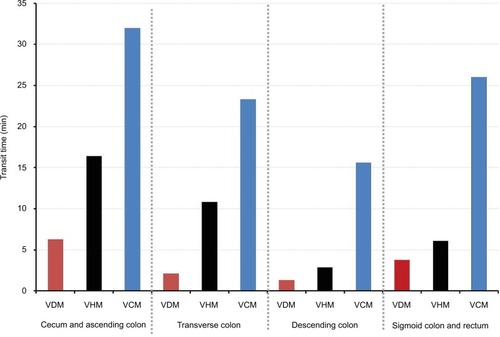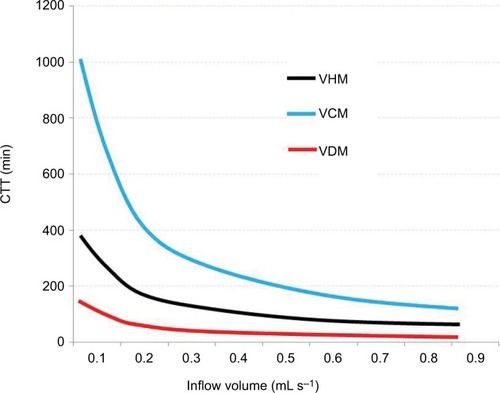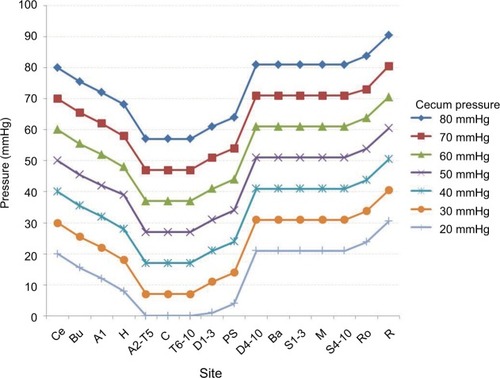Figures & data
Figure 1 CTT calculation method using Bernoulli’s principle.
Abbreviation: CTT, colonic transit time.

Figure 2 Setting of caliber and length.
Abbreviations: Ba, Balli ring; Bu, Busi ring; C, Cannon ring; Ce, cecum; CTT, colonic transit time; H, Hirsch ring; M, Moultier ring; PS, Payr–Strauss ring; R, rectum; Ro, Rossi ring.
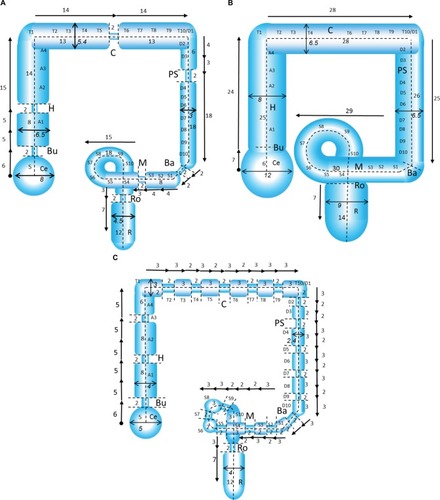
Figure 3 Comparison of the velocity in the VHM, VCM, and VDM.
Abbreviations: VCM, virtual constipation model; VDM, virtual diarrhea model; VHM, virtual healthy model.
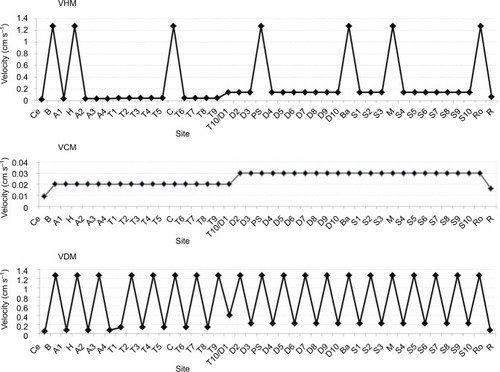
Figure 4 Comparison of transit times in each model.
Abbreviations: VCM, virtual constipation model; VDM, virtual diarrhea model; VHM, virtual healthy model.
